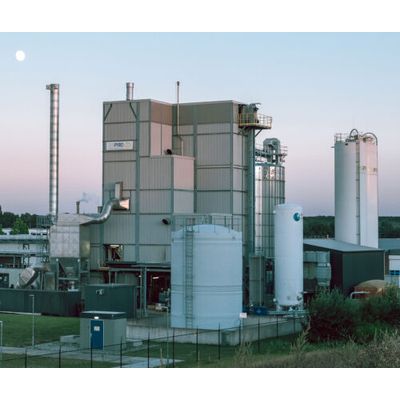

- Home
- Companies
- BTG BioLiquids - BTG Biomass Technology ...
- Products
- BTG-BioLiquids - Rotating Cone Reactor ...

BTG-BioLiquids - Rotating Cone Reactor (RCR)
The most distinctive asset of our patented technology is the Rotating Cone Reactor (RCR). It allows for intense mixing without the use of an inert carrier gas. The RCR design results in a remarkably small reactor, reduced system complexity and a minimal down stream equipment size, compared to other pyrolysis technologies.
Our fast pyrolysis technology turns biomass residues into a renewable bioliquid that can replace fossil fuels. The key features of our technology – the exclusive use of biomass residues and the opportunity for local processing – make it a truly sustainable solution.
Due to the characteristics of our modified RCR (Rotating Cone Reactor) technology and the engineering and design of our fast pyrolysis process, we achieve lower CAPEX and OPEX than competing pyrolysis technologies. The plants we deliver are already economical at a feedstock availability of 5 tons per hour.
Find out more about the specifics or our technology, including:
- No carrier gas needed, resulting in compact equipment design and low CAPEX
- Skid mounted modules to ensure shortest possible onsite plant reassembly
- Excess process steam and electricity production contributing to an improved OPEX
- Commercially proven concept, with high feedstock flexibility
- Stable bio-oil output
The input capacity of our pyrolysis plants is very well aligned with agricultural and forestry operations. Our plants can be located close to the source of biomass residues, to minimize biomass transportation. The local processing of residues offers significant and multiple benefits:
- Due to the high energy density of FPBO, transportation is much more effective.
- Most minerals in the biomass are recovered from the process and can be returned to the soil.
- Local pyrolysis plants create additional income and employment in rural areas.
Our fast pyrolysis technology converts up to 70% of the dry basis biomass feedstock into bio-oil and the remaining parts into char and gas. The heat produced by the combustion of pyrolysis char and non-condensable gasses is recovered as high pressure steam and can be utilized in a steam turbine system for electric power generation and feedstock drying. Excess steam can be sold to nearby industrial facilities or district heating grids.
Our patented fast pyrolysis technology design offers several advantages:
- Absence of inert carrier gas: Instead of carrier gas, mechanical mixing is used for the rapid heating of biomass particles. As a result gas volume flows are smaller, resulting in smaller downstream equipment.
- High feedstock flexibility: suitable for a wide range of biomass residues: Our technology can handle biomass residues with low ash melting temperatures, as temperatures in the heat carrier cycle can be controlled to a large extent.
- Low amounts of solids in the oil (down to 0,01 % wt): Due to our patented cyclone design and our high sand-to-biomass ratio, the produced pyrolysis oil is stable and has a very low solids content.
- Lower CAPEX and OPEX: As explained, the RCR principle inherently results in more compact equipment. In combination with a standardized but flexible design, the CAPEX is lower. Optimizing the design with efficient and integrated heat recovery results in lower OPEX.
- Shorter construction time on location: With our modular building approach, we can erect a plant on site within two weeks.
- High energy efficiency: up to 85/90% (biomass in – oil/heat/electricity out): The excess heat of the process produces enough steam to bring the moisture content of biomass residues (up to wet basis 55%) down to the reguired level, in combination with power generation. In general, more electricity can be produced than required for the entire plant.
A large number of different lignocellulosic feedstocks can be processed in our fast pyrolysis plants. We tested more than 45 different kinds, such as wood, sunflower husk, bagasse, tobacco, energy crops, straw, olive stone residues and many more, to establish their pyrolysis oil yield and quality. Typically, woody biomass gives the highest yields.
Before entering the reactor, the particles in the biomass residues will be reduced to a size below 3 mm to allow rapid conversion. At the same time, its moisture content will be brought below 3 wt.%, to avoid too much water in the pyrolysis oil.
